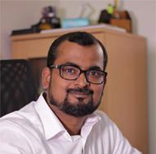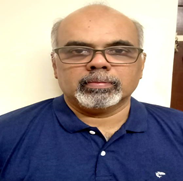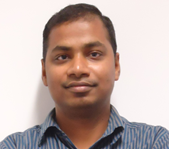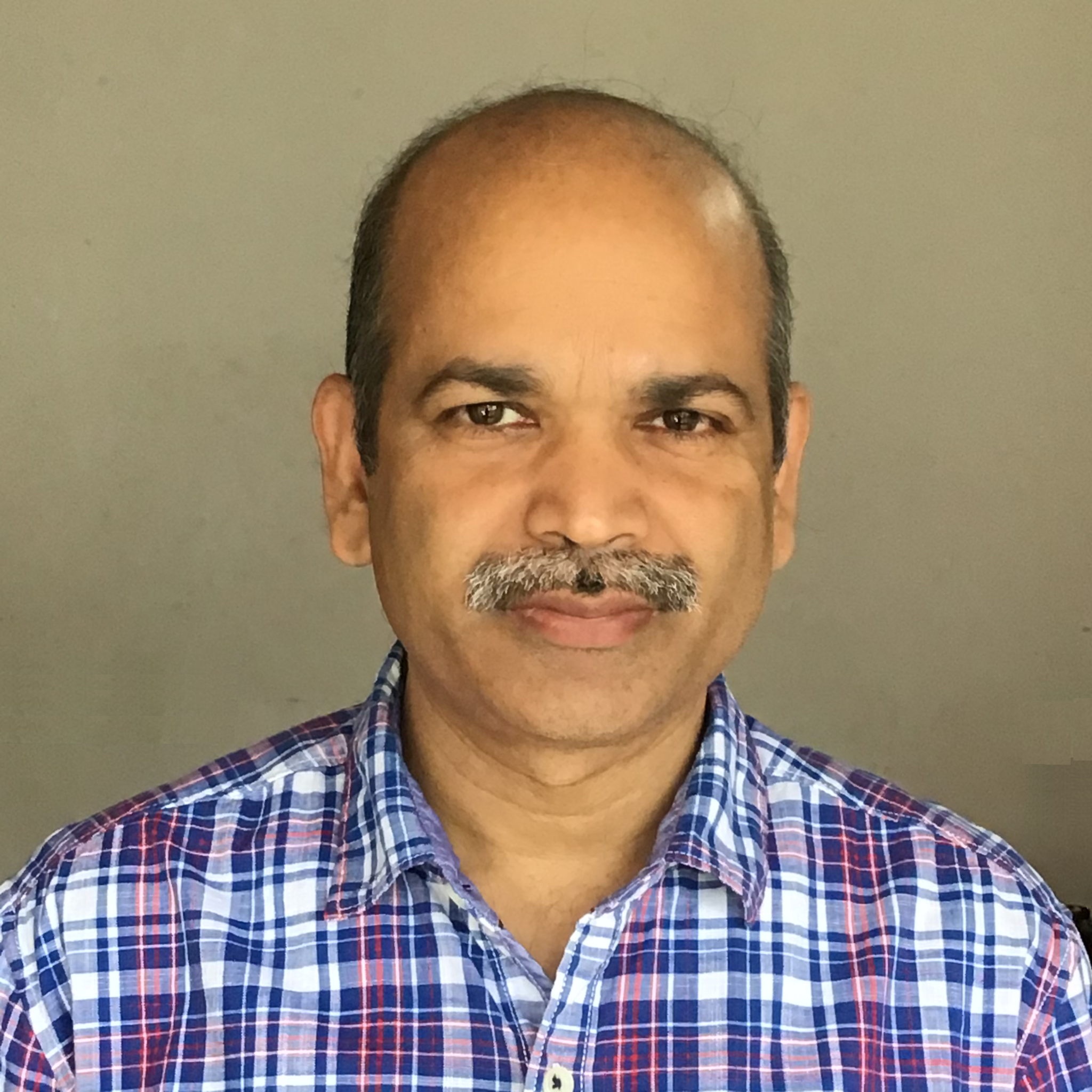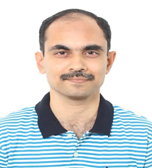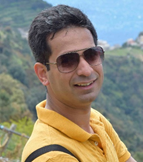Project
A complex interplay between competing degrees of freedom has led to several exotic phenomena in the past, emerging ones in the present and many more expected in the future. Although theoretical modelling and computational methodologies are applied to explain these phenomena, they can also be exploited to predict physical properties suitable for applications. Among the several systems, oxides play broader role in advancing fundamental science and engineering new application domains as shown in the schematic.

Hence a research group on Functional Oxides will have immense contribution to the research. This Functional Oxides Research Group (FORG) will have two verticals, namely, oxide electronics and correlated quantum states. The oxide electronics include photo-ferroelectrics, photocatalysis, spintronics, orbitronics, topological electronics, Mott-tronics. The fundamental studies will focus on emerging quantum states of matter which will bring a paradigm shift in the magnetism and transport phenomena.
Photo-ferroelectric phenomena:
Recently, the photo-ferroelecrric research is gaining momentum due to the observed above bandgap voltage and predicted efficiency exceeding the Shockley-Queisser limit. But, it has limitations imposed by absorption, charge collection, photocurrent and understanding the origin. We propose the approach of tuning the electronic band structure, creating localized excitonic sites, designing the composition and strain gradient ferroelectric and magnetoelectric multilayers etc., towards overcoming the limitations and bringing this field towards practical applications.
- Delocalized conduction band edge in ferroelectric oxides seems to favour photovoltaic response through enhanced covalent interactions. Efforts will be made to design and fabricate ferroelectric ABO3 system for efficient photo-response by appropriate doping and co-doping of A- and B-site ions keeping in view of reduced bandgap, increase in lattice polarization and delocalization of conduction band edges. Band structure analysis on these systems will be carried out by DFT studies.

Schematic of photovoltaic measurement

Pulsed Laser Deposition system
The detailed studies on the photo-ferroelectric phenomenon will be performed on the thin films grown by pulsed laser deposition (PLD) technique with variations in the growth-controlled parameters such as structure, geometry, orientation and electrodes with the scope improving the performance parameters and at the same time understanding the detailed mechanism.
The artificial superlattice structure becomes popular after the discovery of the giant magnetoresistance (GMR) in the Fe/Cr superlattice. However, the synthesis of transition metal oxide (TMO)-based superlattice systems is very challenging because of the structural reconstruction, which modifies the electronic, orbital, and magnetic states of the materials at the interfaces.

Fig. 4. Magnetoresistance at 10 K in 20 nm thick LSMO grown on LAO.
- The TMO exhibits colossal magnetoresistance (CMR) that arises from the metal-insulator phase transition. The enhanced CMR in the most common prototypes of complex transition metal oxide 𝐿𝑎0.7𝑆𝑟0.3𝑀𝑛𝑂3 (LSMO) is observed at low temperature due to the interesting interfacial physical phenomena. For example, around 99.8 % CMR can be seen in the Fig. 4. However, the application of CMR effect in various electronic components can be utilised if it is achieved at room temperature. Thus, it is proposed to explore the mechanism of magnetoresistance (MR) with the combinations of different interfaces in the superlattice consisting CMR materials and non-magnetic TMO to archives high MR at room temperature.
Correlated Quantum States
One of the central challenges in many scientific and technological pursuits is to understand the microscopic origin of emergent, collective and non-equilibrium phenomena in correlated quantum materials. Quantum materials wherein the subtle interplay between electron correlation and emergent degrees of freedom can lead to rich and diverse quantum states with fractional excitations. We aim at the design, growth, and investigation of frustrated quantum magnets that are ideal to host entangled states with exotic quasi-particle excitations.
We intend to employ state of the art microscopic techniques such as nuclear magnetic resonance, muon spin relaxation, neutron scattering, and advanced thermodynamics experiments to probe non-trivial quantum states and spin dynamics of correlated quantum materials on a complementary frequency window. We seek to explore the underlying mechanism that drive collective quantum phenomena and to elucidate the universal principles that organize the entangled states in frustrated quantum magnets.
Oxide thin films and nanoscale heterostructures for solar energy harvesting
Metal oxides are promising candidates for energy harvesting applications because of chemical and thermal stability and relative ease of synthesis. Light induced generation and transport of charges is the first and foremost step in solar energy applications. However, recombination of photogenerated charges poses one of the most significant challenge in achieving the desired efficiency. We will attempt to understand this fundamental bottleneck by creating nanostructures and heterojunctions of metal oxides.
High surface area nanostructures will enable quick separation of charges while heterojunctions will also facilitate charge separation by proper alignment of VB and CB edges of adjacent materials. In order to understand the role of intrinsic defects, both polycrystalline materials and single crystal / epitaxial thin films will be explored. As the figures suggests, SrTiO3 will be used as a model system , where VB and CB edges have ideal energetics for photoelectrochemical water splitting.
Expected deliverables of the research
The experimental results based on polycrystalline and thin film samples could lead to the following deliverables.
- Publications in APS, Wiley, ACS, RSC, AIP etc., journals with around 40 articles. Attempts will be made to publish in journals in Nature and Science publishing groups.
- Prototype 4 x 4 matrix photodetector with 16 pixels covering 1.5 x 1.5 cm2 area with enhanced photosensing properties for applications in various fields.
- With the aid of first principle calculations and model Hamiltonian studies, novel oxide interfaces will be designed to create 2D spin polarized electron gas and exotic magnetic quantum phases
- Experimental realization of quantum spin liquids in novel 2D and 3D frustrated magnets
- Discovering topological quantum phases in the configuration space spanned by correlation strength, spin-orbit coupling and crystal field strength.
- Prototype materials for room temperature CMR.
- The research findings will be presented periodically in suitable oxides materials and physics related conferences such as APS meet, MRS meeting, MMM, ACCMS, InterMag, MAGMA, International ferroelectric meet etc.
- Workshop on Correlated Quantum Oxides will be organized.
Current status
Available infracture: Present and to be incorporated
Sputtering unit
Spin coating units
Cyclic voltammogram
High voltage poling set-up (10 kV)
High temperature furnaces (1000, 1500 and 1700 C)
Thermal evaporation unit
Photovoltaic measurement set-up with xenon-arc lamp
Photoelectrochemical work-station equipped with solar simulator having AM 1.5G filter
Gas Chromatograph equipped with FID and TCD
Pyroelectric current measurement set-up down to 5 K.
Pulsed laser deposition system (excimer laser and vacuum chamber)
Inert gas workstations
Workstation for high speed computing
Vibration sample magnetometer attachment to PPMS
Horizantal sample rotator for high resolution measurements using PPMS
Ferroelectric loop tracer
progress
Quantum Phases in Iridiates: Competition between spin-orbit coupling and strong correlation effect. (Amit Kumar and B. R. K. Nanda (Unpublished)
- FI/M: ferromagnetic Insulator/Metal
- AFI/M: Antiferromagntic Insulator/Metal
- PM: Paramagnetic Metal
Development of short and long‑range magnetic order in the double perovskite based frustrated triangular lattice antiferromagnet Ba2MnTeO6. Khatua et. al. Scientific Reports, 11, 6959 (2021)
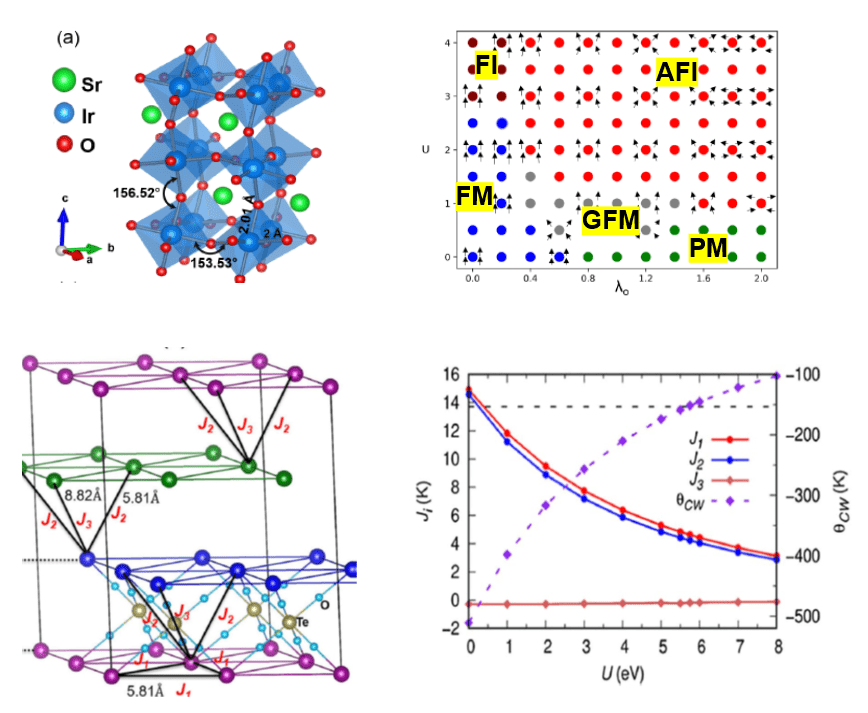
Collaborations
International Collaborations
- Prof. Wilfrid Prellier, Director at CRISMAT, Laboratory CNRS, France link
- Prof. Shashi Satpathy,Curator’s Professor, University of Missouri, USA link
- Prof. Arunava Gupta, University of Alabama, Tuscaloosa, USA.link
- Prof. Tae Won Noh, Seoul National University, Seoul, Republic of Korea.-link
- Prof. Patrick Woodward, Ohio State University, USA link
- Prof. Nobuo Saito, Nagaoka University of Tech, Japan.link
- Prof. Xinjian Feng, Soochow University, China,
- Prof. Oomman Varghese, University of Houston, USA link
- Prof. Karthik Shankar, University of Alberta, Canada link
Publication
Anomalous diameter dependent electrical transport in individual CuO nanowire SK Kajli, D Ray and Somnath C Roy Journal of Physics D: Applied Physics, 54(25), 255104 (2021) link
Development of short and long-range magnetic order in the double perovskite based frustrated triangular lattice antiferromagnet Ba2MnTeO6,
J. Khatua, T. arh, S. B. Mishra, H. Luetjens, A. Zorko, B. Sana, M. S. R. Rao, B. R. K. Nanda, P. Khuntia, Scientific Reports, 11, 6959 (2021), link
Societal impact
The objectives and deliverable of this proposal is to synthesize emerging Oxide materials for next generation electronic devices and to gain new insight on the quantum phenomena in materials. In the short term, we envisage gain in human resource and knowledge as well as improving stature of Indian Science. Looking forward, development of novel materials with indigenous technologies, in particular, materials related to solar energy harvesting and photodetectors, will lead to start-ups with support from “Make in India’’ or “Self-reliant India’’ initiatives. Such start-ups or industries, in turn, will generate employment opportunities as well as further manpower development in these fields, which are all expected to have a significant impact on society.
Sustenance statement
Interdisciplinary activities with the support of faculties in other branches of Engineering and Science to strengthen the application aspect of the oxides will be given priority to take the centre’s activities to the next level. The cost of maintaining the centre’s activities including the manpower support, equipment maintenance etc., will be met through i) project grants from other government funding agencies such as DST, CSIR, DAE etc., against the project submitted by individual/group of faculties in the field of work related to the centre, ii) Support through the project on various Indo-Foreign collaboration such as Indo- French, Indo-South Korea, BRICS, Indo-Portugal, Indo-Australia etc. Other avenues such as consultancy projects, industrial collaboration, and possible technology transfer on the developed prototype devices, etc., will also be considered. In addition, long term inter university collaboration (for eg. in the lines of IIT Bombay -Monash Research Academy, IIT Delhi - Toyo University Research centre etc.,) and industry academia consortiums will be formed to sustain the centre.


